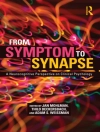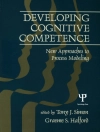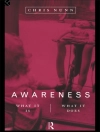An insightful look at the role of neuroscience and neuropsychology
as it relates to Response to Intervention (RTI) in learning
disability diagnosis, treatment, and policy reform
Neuropsychological Perspectives on Learning Disabilities in the
Era of RTI is a revolutionary new volume presenting the latest
research–in question-and-answer format–from leading
scholars about the contributions of neuroscience and
neuropsychology as it relates to Response to Intervention (RTI) in
learning disability identification, diagnosis, and recommended
interventions.
This collective work includes contributions from more than thirty
neuroscientists, neuropsychologists, clinical psychologists, and
school psychologists with training in brain-behavior relationships,
who explore the answers to questions including:
* How do you reconcile RTI as a means of diagnosis of learning
disability with knowledge from the clinical neurosciences??
* What do you think neuroscience has to offer laws and policies
associated with learning disability determination?
* What do you think neuroscience has to offer the assessment and
identification of learning disabilities?
* What role does neurocognitive science play in designing
interventions in the context of RTI?
* What role does neuropsychology have to play in the diagnosis of
learning disability?
Featuring contributions from leaders in the field of
neuropsychology and school psychology, and with a Foreword from
Sally Shaywitz, Neuropsychological Perspectives on Learning
Disabilities in the Era of RTI illuminates the contributions of
neuro-science and neuropsychology to learning disability
identification and current educational reform.
Tabella dei contenuti
Chapter 1. Neuropsychology and Specific Learning Disabilities:Lessons from the Past as a Guide to Present Controversies and Future Clinical Practice (By Alan S. Kaufman).
Chapter 2. RTI, Neuroscience, and Sense: Chaos in the Diagnosisand Treatment of Learning Disabilities (By Cecil R.Reynolds).
Chapter 3. Neuroscience and RTI: A Complementary Role (By H.Lee Swanson).
Chapter 4. The Education Empire Strikes Back: Will RTI Displace Neuropsychology and Neuroscience from the Realm of Learning Disabilities (By Merrill Hiscock and Marcel Kinsbourne)?
Chapter 5. Nature-Nurture Perspectives in Diagnosing and Treating Learning Disabilities: Response to Questions Begging Answers That See the Forest and the Trees (By Virginia W.Berninger and James A. Holdnack).
Chapter 6. Compatibility of Neuropsychology and RTI in the Diagnosis and Assessment of Learning Disabilities (By Cynthia A.Riccio).
Chapter 7. Assessment versus Testing and its Importance in Learning Disability Diagnosis (By Julie A. Suhr).
Chapter 8. Comprehensive Assessment Must Play a Role in RTI (By Steven J. Hughes).
Chapter 9. The Need to Integrate Cognitive Neuroscience and Neuropsychology into a RTI Model (By Daniel C. Miller).
Chapter 10. Neuropsychological Assessment and RTI in the Assessment of Learning Disabilities: Are They Mutually Exclusive(By David Breiger and Lawrence V. Majovski)?
Chapter 11. Learning Disabilities: Complementary Views from Neuroscience, Neuropsychology, and Public Health (By Ronald T.Brown, Brian P. Daly, and Gerry A. Stefanatos).
Chapter 12. Integrating Science and Practice in Education (By Richard Boada, Margaret Riddle, and Bruce F.Pennington).
Chapter 13. Perspectives on RTI from Neuropsychology (By Scott L. Decker, Jessica A. Carboni, and Kimberly B.Oliver).
Chapter 14. Neuropsychological Aspects of Learning Disabilities Determination: Scientific and Cultural Considerations (By Sangeeta Dey).
Chapter 15. Identifying a Learning Disability: Not Just Product, but Process (By Colin D. Elliott).
Chapter 16. Integrating RTI with Cognitive Neuroscience in the Assessment of Learning Disabilities (By Steven G.Feifer).
Chapter 17. Neuropsychology and the Implications for Policy, Diagnosis, and RTI By Lisa A. Pass and Raymond S. Dean).
Chapter 18. Neuroscience, Neuropsychology, and Education:Learning to Work and Play Well with Each Other (By Michael D.Franzen).
Chapter 19. Diagnosing Learning Disabilities in Non-Majority Groups: The Challenges and Problems of Applying Non-Neuropsychological Approaches (By Javier Gontier and Antonio E. Puente).
Chapter 20. The Role of Neuroscience and Neuropsychology in the Diagnosis of Learning Differences and the RTI Paradigm (By Sally L. Kemp and Marit Korkman).
Chapter 21. Q & A about the Role of Neuroscience and Neuropsychology in the Assessment and Treatment of Learning Disorders (By Rosemarie Scolaro Moser).
Chapter 22. RTI and Neuropsychology: Antithesis or Synthesis (By Andrew L. Schmitt, Ronald B. Livingston, and Owen Carr).
Chapter 23. Utilizing RTI as an Opportunity to Identify and Plan More Effective Educational Interventions for Children with Learning Disabilities (By Amy Nilson Connery).
Chapter 24. Neuropsychology, Neuroscience, and Learning Disabilities: Brain Behavior Relationships (By Arthur Mac Neill Horton, Jr.).
Chapter 25. Knowing Is Not Enough — We Must Apply. Willing Is Not Enough – We Must Do (By Elaine Fletcher-Janzen).
Circa l’autore
Elaine Fletcher-Janzen, Ed D, NCSP, has been a school
psychologist in the public schools and neuropsychiatric inpatient
settings for the past twenty-four years. She has coedited and
authored fourteen books and reference works.
Cecil R. Reynolds, Ph D, is the author of more than 300
scholarly publications and author or editor of forty-five books
including the Encyclopedia of Special Education, Third
Edition (Wiley) with Elaine Fletcher-Janzen. He is Editor of
Applied Neuropsychology and author of several widely used
tests of personality and behavior.












